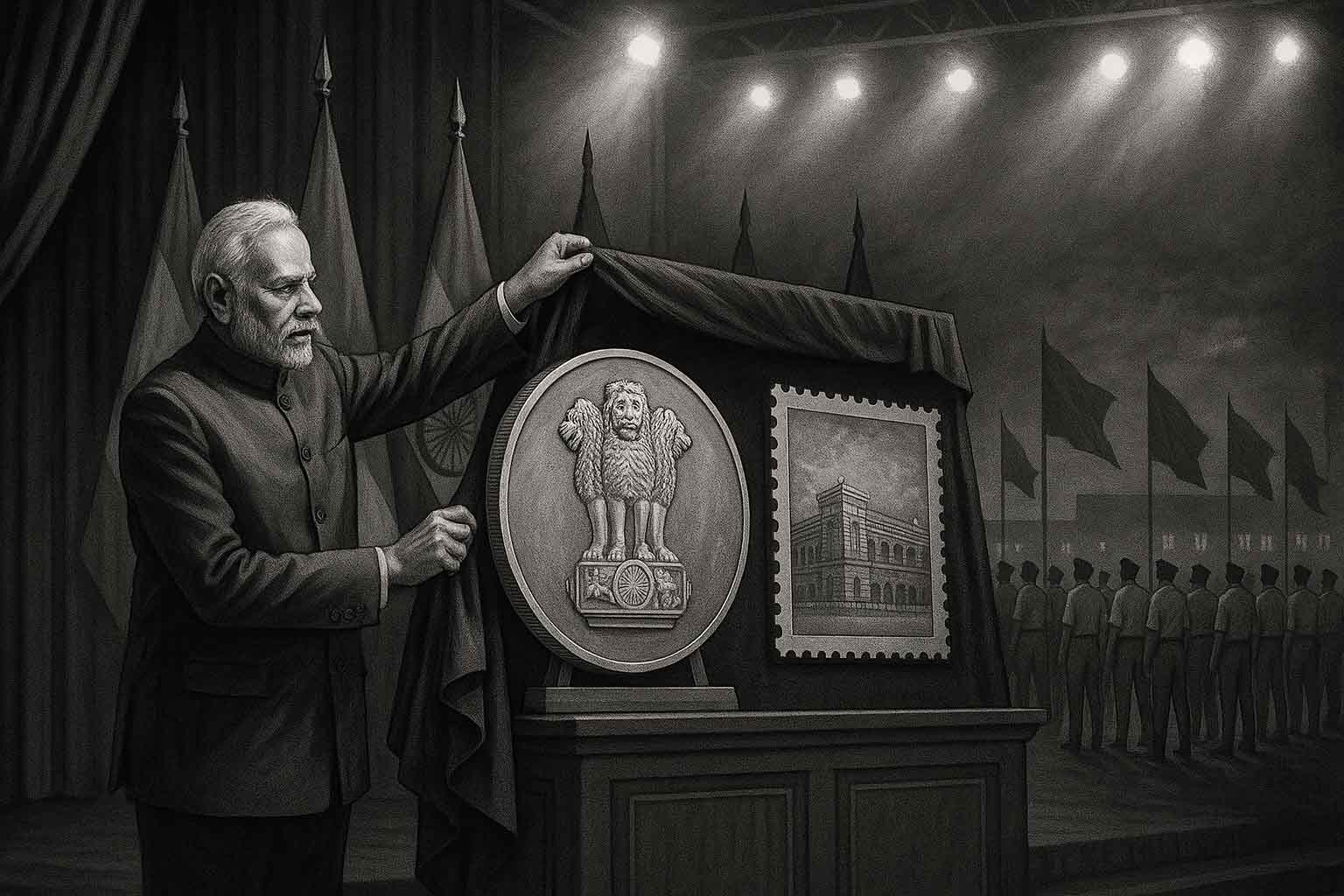New Delhi, October 1 –
The Rashtriya Swayamsevak Sangh (RSS), one of India’s most influential social and cultural organizations, marked its 100th year today with a grand centenary celebration in the capital. The event, held at the Dr. Ambedkar International Centre, witnessed the presence of Prime Minister Narendra Modi, who released a special postage stamp and a commemorative coin to honor the organization’s century-long journey.
The centenary ceremony was not just a symbolic moment but also a reflection of the RSS’s evolving role in Indian civic and cultural life. With an emphasis on social initiatives, volunteerism, and community mobilization, the event brought together members, political leaders, scholars, and representatives from across India.
The Ceremony
The celebration opened with a cultural presentation tracing the origins of the RSS in 1925 in Nagpur under Dr. K.B. Hedgewar, and its transformation into a national volunteer force shaping community initiatives.
The highlight came when Prime Minister Modi unveiled the centenary postage stamp and ₹100 commemorative coin, both symbolizing the organization’s longevity and contributions. The stamp depicts the RSS shakha (daily gathering) while the coin carries the emblematic bhagwa dhwaj (saffron flag), the guiding symbol of the Sangh.
“This is not just a celebration of 100 years; it is a celebration of values—discipline, service, and patriotism—that continue to inspire millions,” PM Modi said in his address.
Security and Traffic Measures
Given the high-profile nature of the event, Delhi Police and paramilitary forces mounted elaborate security arrangements. Roads around Janpath and the Dr. Ambedkar International Centre witnessed diversions, while additional personnel were deployed at Metro stations and approach routes. Morning office-goers experienced temporary delays as traffic was rerouted.
RSS at 100: A Cultural Milestone
For political observers, the centenary marks more than a commemorative gesture—it represents the culmination of a century-long transformation of the RSS from a small volunteer group to a nationwide cultural force.
Over the years, the RSS has:
- Built a vast grassroots network through daily shakhas.
- Contributed to social work during natural disasters and emergencies.
- Inspired the formation of affiliated organizations (the Sangh Parivar) working in labor, education, agriculture, and women’s empowerment.
Spotlight on Social Initiatives
Organizers emphasized the role of the RSS beyond politics. Displays at the venue showcased:
- Flood and earthquake relief work.
- Rural education initiatives.
- Skill development and health camps.
- Youth mobilization for volunteerism.
For many attendees, the centenary was as much about looking forward as it was about looking back.
Symbolism of Stamp and Coin
Commemorative issues by India Post and the Ministry of Finance are rare honors, reserved for major milestones. The stamp and coin released today place the RSS alongside institutions and leaders recognized for shaping India’s civic identity.
Philatelists note that such releases become archival legacies, reflecting state recognition of cultural significance.
Voices at the Event
- RSS General Secretary Dattatreya Hosabale: “Our mission has always been to serve society, strengthen families, and preserve India’s cultural roots.”
- Political Analyst: “The centenary underlines how the RSS has grown from obscurity to mainstream recognition, influencing discourse on nationhood and service.”
- Volunteer from Nagpur: “This moment connects us to Hedgewar’s vision from 1925. It is historic to witness our ideals honored at the national level.”
Critics and Conversations
While the centenary is celebrated by supporters, it also rekindles debates about the RSS’s place in Indian society. Critics argue that its ideological framework often blurs the line between cultural and political space. The event, however, underlined volunteerism and service, consciously avoiding overt political overtones.
100 Years of RSS: Key Turning Points
- 1925: Founded in Nagpur by Dr. K.B. Hedgewar.
- 1940s: Expansion under M.S. Golwalkar.
- 1975–77: Played a role in resisting the Emergency.
- 2000s–2020s: RSS volunteers involved in nationwide social work, education, and relief missions.
- 2025: Celebrates 100 years, recognized through national stamp and coin.
Why the Centenary Matters
The centenary is more than a ceremonial milestone—it is an assertion of continuity. In a world of shifting political and cultural landscapes, the RSS’s ability to maintain daily shakhas, mobilize volunteers, and influence civil society is seen as a unique organizational feat.
Conclusion: A Century Completed, A Future Ahead
As saffron flags fluttered at the centenary venue and Prime Minister Modi unveiled the stamp and coin, the RSS marked 100 years not just of survival, but of relevance.
For its supporters, the centenary symbolizes dedication to service and cultural identity. For observers, it underscores the Sangh’s enduring role in shaping India’s social and political currents.
The question that remains: What will the next 100 years of the RSS look like?
#RSS100 #PMModi #Delhi #CommemorativeStamp #Coin #Centenary #CivicLife #India #RSSCentenary






















+ There are no comments
Add yours